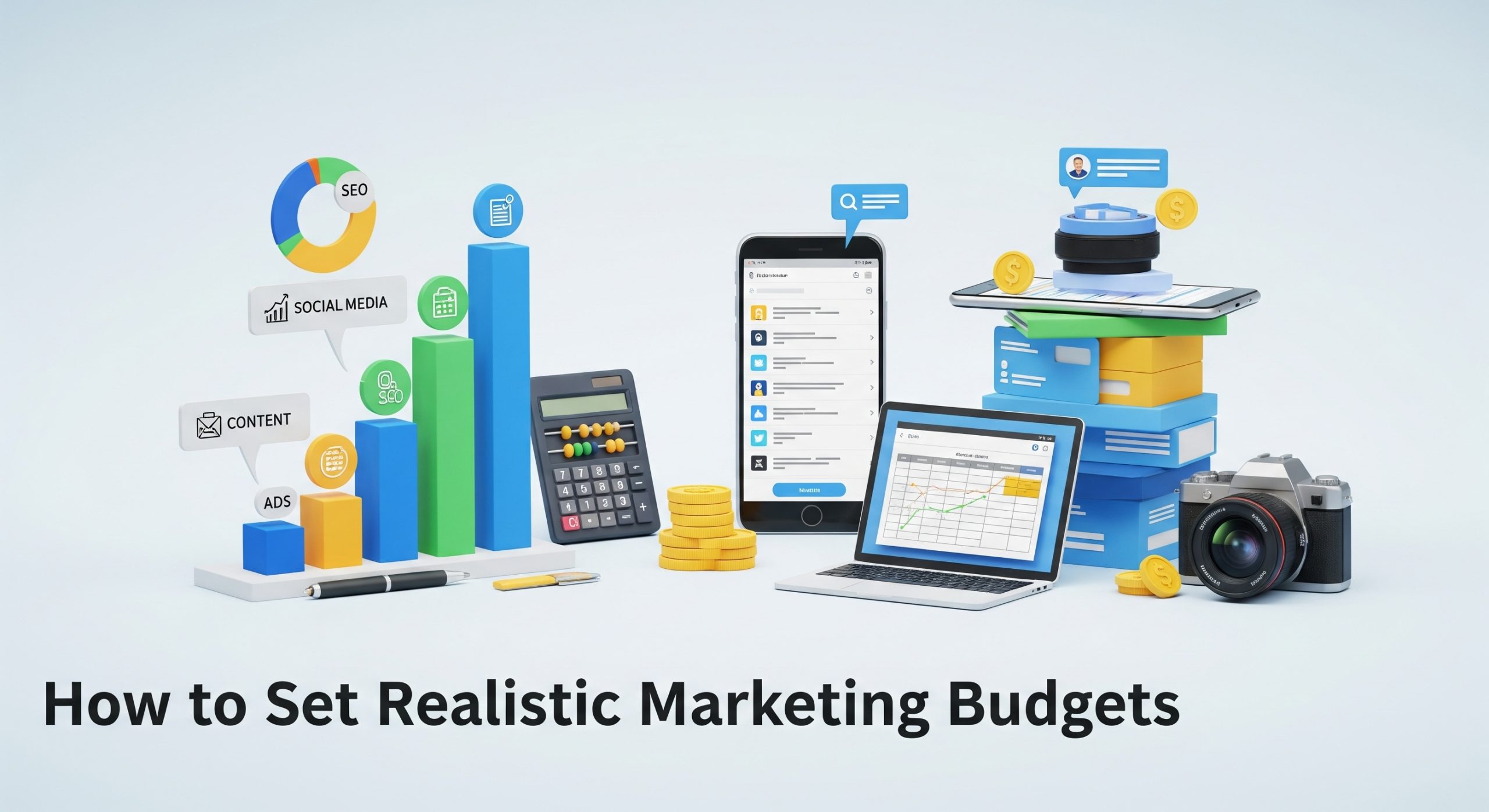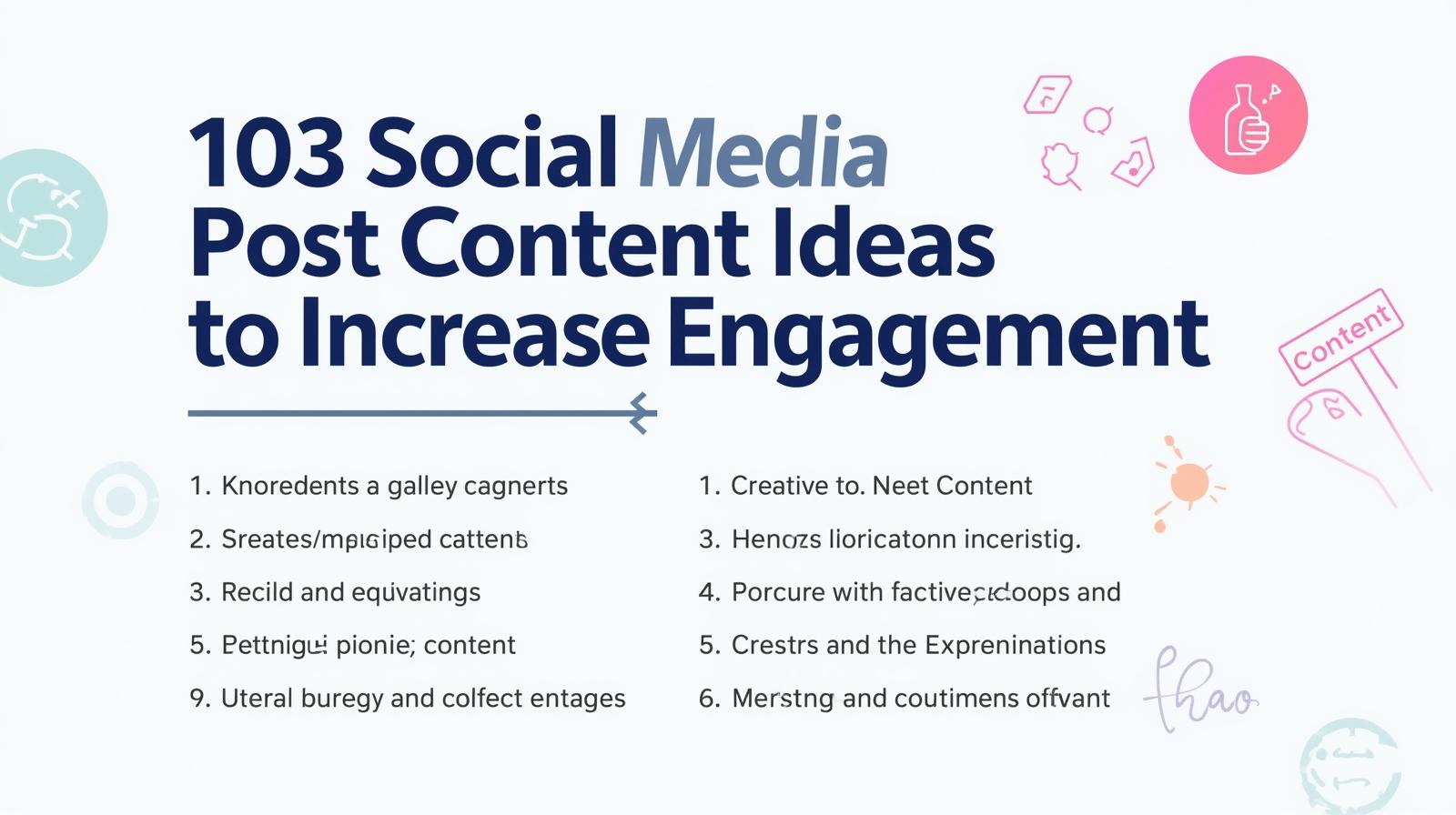Ever seen a business that isn’t doing any kind of marketing and yet their sales are off the roof? It’s rarely possible. Marketing is a boon for every industry, no matter the size and scale of your business. But setting realistic marketing budgets for your campaigns is important to reach a wide audience.
By “realistic”, we mean allocating the right amount of budget that doesn’t go to waste if your campaign doesn’t perform well. However, many performance marketing companies today set unachievable goals, such as targeting a wide range of audiences using a single campaign. Such marketing campaigns perform poorly because they are run using an unrealistic budget.
A realistic marketing budget has to do with allocating some percentage of your overall income towards marketing campaigns. Let’s understand what you need to look out for in 2025 to set a realistic marketing budget –
Why Do You Need Realistic Marketing Budget Allocation?
It is important to set an effective marketing budget for your marketing campaigns to maximise ROI, improve marketing efficiency and enhance competitiveness for businesses.
- Strategic budget allocation is highly crucial to ensure that their marketing efforts are result-oriented.
- It requires directing the financial resources of the company towards marketing initiatives which have the highest potential. It should align with the broader company goals.
- For effective budget allocation, companies should focus their marketing spend on high-performance marketing tactics and channels.
- Putting all your eggs in one basket can be a risk to your business and overall marketing efforts.
- You can maximise ROI by diversifying your marketing budget across different marketing channels. For instance, you can invest some part of the budget towards marketing campaigns running on social marketing platforms, some towards search engine performance, and so on.
- Effective marketing budget allocation can help you achieve your overall business goals. In addition, it will also enable you to track your marketing efforts and get measurable results.
Setting Realistic Budgets on Various Marketing Platforms
You need a realistic marketing budget so that you can prioritise the projects you want to invest in. In addition to that, you can compare your progress over the years. You can track the growth of the company by tracking your marketing campaigns. With proper marketing fund allocation, you will be able to show a positive ROI. A recent survey from HubSpot indicates that marketers witness the highest ROI from social media marketing tools.
Before marketing budget allocation, business owners should understand the importance, features and capacity of various digital marketing platforms and channels. They largely contribute to the execution of your overall marketing strategy.
You can leverage various marketing channels, which include search engine optimisation (SEO), search engine marketing(SEM) or the pay-per-click (PPC) model, social media marketing, content marketing, influencer marketing, email marketing, affiliate marketing and video marketing.
Budget for SEO Marketing
The cost considerations for each platform and digital marketing strategy are different. For example, search engine optimisation requires you to either hire in-house content writers or outsource SEO company to generate organic traffic.
This digital marketing strategy will be effective for companies which are looking for long-term, sustainable traffic channels. SEO is a long-term investment which requires businesses to allocate 15% to 20% of their entire marketing budget to SEO marketing.
Budget for PPC/Search Engine Marketing
You can adopt pay-per-click or search engine marketing to run ads on platforms like Google Ads. This type of digital marketing is effective for capturing high-intent searches and getting immediate traffic to your campaigns.
Businesses which are looking for high-value conversions and solving immediate needs can employ the pay-per-click model. This digital marketing strategy justifies click costs. Many digital marketing companies allocate approximately 30% of their digital marketing budget to Google Ads. Paid campaigns contribute largely to the success of the business, but they also consume a large portion of the digital marketing budget.
Realistic Budget for Social Media Marketing
Businesses opt for social media marketing in which they can do paid advertising or generate organic content across platforms like Instagram, X (formerly Twitter), LinkedIn, etc.
For organic social media marketing, companies need to invest in social media management tools, community management, as well as content creation. However, on the other hand, paid advertising on social media platforms is similar to PPC, but the cost depends on specific social media platforms.
Social media advertising is highly effective for engaging the audience, building community and increasing brand awareness. In addition to that, businesses can do targeted advertising using social media platforms. Now, coming onto the budget, companies will need approximately 20% to 30% of their entire digital marketing directed towards social media platforms.
Realistic Budget for Content Marketing
Content marketing is an effective digital marketing strategy in which companies create and distribute relevant, valuable content to attract and engage viewers. This form of marketing includes creating videos, infographics, blog posts, podcasts, and more.
This strategy is effective for businesses that want to nurture prospects using the marketing sales funnel. Businesses can assign 15% to 25% of their digital marketing budget towards content marketing. The budget will be directed towards multiple channels to repurpose the content across email marketing, social media, SEO and generating leads.
How Should You Distribute The Marketing Budget
Your distribution of digital marketing budget should follow the 70-20-10 rule, which is a popular framework for budget division.
- This framework provides a balanced approach for managing existing channels and exploring new opportunities. You should invest 70% of the digital marketing budget in the tested and proven channels. There must be some platforms and channels that have given you predictable returns.
- 20% of the digital marketing effort should go into the channels that might be new to your business but have the potential to attract your target audience.
- Businesses should reserve a small percentage of their digital marketing budget, say 10% to try completely new channels. It will not risk your core marketing performance, but will also help you explore new growth opportunities.
To Sum Up
You should optimise your marketing budget allocation process, which is crucial to achieve marketing success and drive sustainable growth. Among different digital marketing strategies, some platforms provide you with more cost-efficient options to run marketing campaigns, while some may be more expensive. However, you should target platforms that drive measurable results while providing better customer reach. For instance, VerveOnlineMarketing, a leading performance marketing company in India, drives business growth by running measurable ad campaigns. You can consult our team to design specific ads that meet your business needs and overall objectives.






